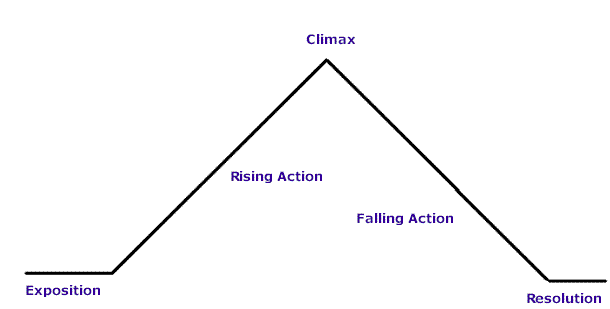
When weaving a narrative, understanding the intricacies of plot events and their sequential arrangement serves as the backbone of effective storytelling. The complexity of plot structures varies, but fundamentally, all stories share a common framework. To assist novice and seasoned writers alike, this article provides a comprehensive exploration of the stages of plot development and clarifies the proper ordering of essential plot events. By grasping these concepts, writers can hone their craft and enhance their narrative authority.
The Analysis of Plot Structure
Plot structure involves the arrangement of events that collectively form a coherent storyline. Various models have been proposed to illustrate this structure, yet among them, one of the most widely accepted forms is the Freytag’s Pyramid, which delineates five key components: exposition, rising action, climax, falling action, and resolution. Below, we delve into each of these elements, presenting examples and discussing their significance within the narrative flow.
1. Exposition: The Foundation of the Narrative
Exposition lays the groundwork for the story by introducing characters, setting, and the initial situation or conflict. This critical stage allows readers to familiarize themselves with the protagonist’s world and offers insights into their motivations and potential obstacles.
For instance, in a tale centering around an ambitious explorer, exposition might include details about their background, the lure of adventure, and their relationships with close companions. Establishing these elements is vital as they directly influence the reader’s emotional investment and comprehension as the plot unfolds.
2. Rising Action: The Development of Conflict
As the narrative progresses, the rising action introduces a series of conflicts and complications that challenge the protagonist. This stage is crucial, as it cultivates suspense and builds tension, encouraging readers to engage with the unfolding drama.
During the rising action, the explorer might encounter unforeseen obstacles, such as natural disasters, rival adventurers, or personal dilemmas. Each event escalates the stakes, thereby preparing the reader for the impending climax. The use of a well-paced rising action can heighten interest, compelling readers to continue turning the pages.
3. Climax: The Pinnacle of Tension
The climax represents the zenith of the story’s tension, where the primary conflict reaches its peak. This transformative moment often forces the protagonist to confront their greatest fears or challenges, leading to a decisive turning point in the narrative.
In our explorer’s journey, the climax may arrive when they find themselves trapped in a treacherous situation, perhaps needing to make a critical decision that could alter the course of their adventure. The resonance of this moment must fulfill the promises made during the rising action, delivering satisfaction and emotional weight to the audience.
4. Falling Action: The Aftermath of the Climax
Following the climax, the falling action addresses the repercussions of the pivotal events. This segment allows characters to grapple with the outcomes of their decisions and reflect upon their journey thus far. It serves as a bridge between the high stakes of the climax and the narrative’s resolution.
In our narrative, the explorer might begin to realize the implications of their choices—perhaps they have gained profound insights, formed new alliances, or faced grave losses. As the tension dissipates, readers begin to anticipate how these themes will resolve in the final segment.
5. Resolution: Harmonizing the Narrative Threads
The resolution ties together the narrative threads, providing closure to the story. In this stage, loose ends are addressed, and characters often experience growth or transformation as a result of their journey. This part is essential for leaving readers with a sense of completeness and satisfaction.
For our explorer, the resolution might depict their return home, where they share their experiences, newfound wisdom, and perhaps unresolved feelings about their adventure. This conclusion allows the audience to ponder the broader implications of the story, thus encouraging further reflection.
Incorporating Variability in Plot Structures
While Freytag’s Pyramid serves as an essential guideline, it is important to recognize that not all narratives conform strictly to this model. Some authors choose to employ nonlinear structures, flashbacks, or multiple perspectives, which can provide innovative ways to enrich the storytelling experience. For example, beginning at the climax and then unraveling the narrative through flashbacks can create a compelling sense of intrigue.
Conclusion: The Art of Sequencing
Understanding the correct placement of plot events within the storytelling paradigm is integral for crafting compelling narratives. Mastery over the elements of exposition, rising action, climax, falling action, and resolution empowers writers to create evocative and structured stories that resonate with audiences. By recognizing these sequences, both emerging and accomplished authors can elevate their storytelling endeavors—ensuring that each layer of plot serves to enhance the reader’s experience. In the realms of fiction and literature, the sequence of events encapsulates not merely a chain of occurrences but rather a vivid portrayal of human experience, allowing readers to traverse the complexities of life, emotion, and conflict through the power of narrative.
